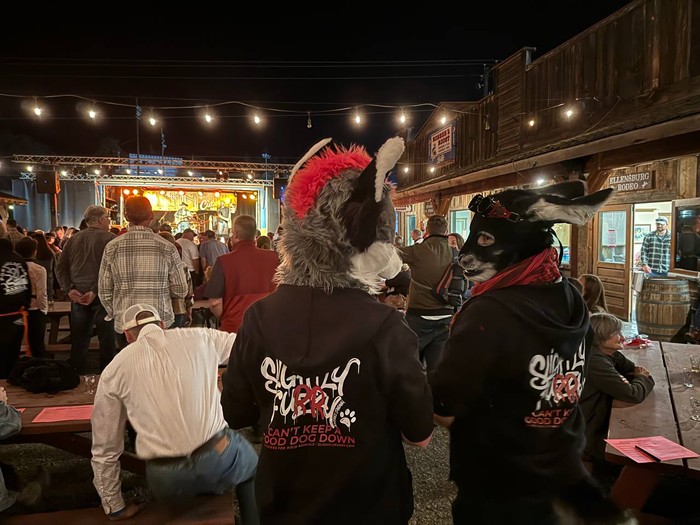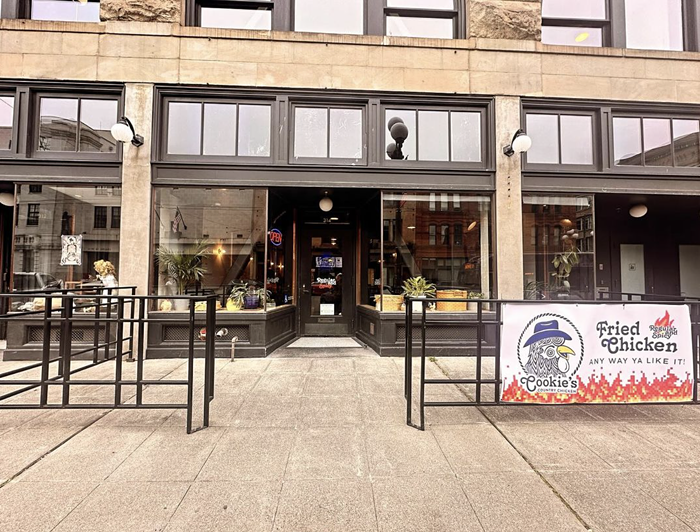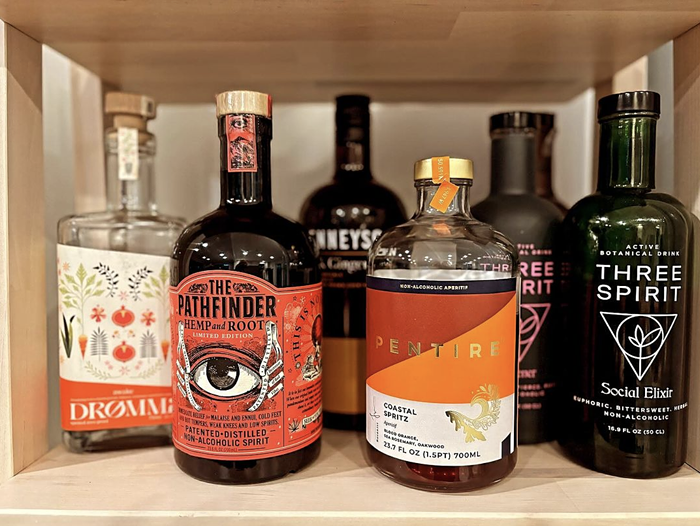Everybody in Seattle knows that summer doesn't typically start until after the Fourth of July. It's when, after months of rain (the infamous "Juneuary"), the clouds finally part and the temperatures rise. But not this year.
Nobody knows this better than local farmers. While people have been jumping in lakes and exuberantly eating strawberries and cherries weeks earlier than usual, farmers—whether they're located in the Snoqualmie Valley, in Island County, or on the Olympic Peninsula—have been wrangling hundreds of thousands of feet of drip irrigation tape (thin, perforated hoses that run along the base of the crop rows) under relentlessly sunny skies.
"This is the hottest, driest spring ever—as in the least amount of rainfall and highest temperatures for May and June," says Jason Salvo, who, along with Siri Erickson-Brown, farms 16 acres of vegetables on their farm, Local Roots, in Duvall. The farm supplies Seattleites with produce through weekly CSA (community supported agriculture) boxes, farmers markets, and restaurants such as Altura, Blind Pig Bistro, Spinasse, Marjorie, Westward, and the Whale Wins.
"Plants just don't perform as expected when they're stressed by both heat and lack of water," says Erickson-Brown. "When it gets really, really hot, tomato blossoms drop. So they won't set fruit because they're like, 'It's a stressful world, I can't make fruit!'"
Plants at Willowood Farm, a 15-acre vegetable farm on Whidbey Island, also can't take the heat. "Right now," says farmer and owner Georgie Smith, "we're picking shelling peas and fava beans. And we have 30 percent less yield than we should have gotten, because they both dropped flowers when it was hot."
"I also grow a ton of garlic, and my garlic has suffered," adds Smith. "Along with the dry weather, I got a rust infestation." Rust, a fungal infection that can be lethal to plants, flourishes during lengthy dry periods and significantly reduced Smith's garlic crop.
"Everyone is feeling the effects of the drought," says Kia Armstrong, sales and promotion manager at Nash's Organic Produce, a 75-acre farm that raises vegetables, grains, seeds, chickens, and pigs near Sequim on the Olympic Peninsula. "This is uncharted territory and extremely severe. Many farms run on river systems, and the rivers are at August levels—or lower."
According to Armstrong, the Dungeness River that Nash's depends on is at a record low. "Usually the Dungeness flows at around 600 cubic feet per second this time of year, but now it's running at around 125 cubic feet per second. And there is literally no snowpack."
From the dry fields at Local Roots Farm, which sits in the Snoqualmie River Valley, in the shadows of the Cascade Mountains, you can see that there is little to no snow on the mountaintops. Typically, the snowpack acts like a frozen reservoir, melting slowly throughout the spring and summer to supply water to rivers and, by extension, farms. As of a couple weeks ago, the snowpack in Washington was already gone, and this year, the runoff from the snowmelt is predicted to be at its lowest in 64 years.
"For the eight years that we've been doing this, we'll water something once if we plant it in April, May, or June, and probably never water it again," says Salvo. "There's so much groundwater available that the initial watering is the only time the plant needs it."
But this year, the sun, which begins shining fully at 6:30 a.m. and doesn't set until after 9 p.m., has had unprecedented amounts of time to bake the earth, causing groundwater to evaporate. Farmers are watering crops three or four times more than usual because there's simply no water left in the soil.
"The only water the plants are getting is coming out of sprinklers or drip tape," says Salvo. "It's totally different than it's ever been."
"Plants are really suffering," says Smith. "We can't get anything to germinate unless we irrigate. I have to run my water pump, which also means a higher power bill. It's a lot more expensive all around. We've got one guy on the crew doing just irrigation."
Local Roots also has one person working exclusively on watering each day, and has brought in part-time workers for extra help with planting and picking. Erickson-Brown estimates that they are spending about $1,500 to $2,000 more a month on labor.
According to Armstrong, farming at Nash's this year has involved purchasing "a lot more drip tape," along with paying for additional costs such as repairing wells on the property. "We have three fields with wells, but we don't usually use those for extensive irrigation," she says.
It was a calculated expense. By the end of January, extremely concerned by the lack of snowpack, farm managers at Nash's created an entirely new strategy for the growing season. It was a substantial amount of work, especially considering the farm sustainably manages its soil through crop rotation and field planning, which happens up to six years in advance.
"We had to shift around where to plant crops," says Armstrong. "This year, we were forced to make decisions to put veggies in fields that weren't slated for them."
It's one of many adjustments made on the farm. "We're only growing about half the number of row crop vegetables than we usually do because we just don't have the water to do it," says Armstrong. Instead, Nash's is focusing on growing grains—crops that require less water and will hopefully make up for lost vegetable income.
Farming is fraught with unknowns and constantly changing conditions, so doing it successfully requires establishing systems that make revenue consistent and reliable. With the drought, however, the usual business models are being called into question and new solutions are being drafted.
Nash's is prioritizing its farmers markets, CSA, and farm-store sales over those to organic food distributors and wholesale accounts like PCC Natural Markets. At Local Roots, which is a smaller farm, farmers are wrestling with which sales channels to prioritize. "We're actively talking about whether we are going to have enough water to keep the produce that we're growing alive in order to do all our restaurants, our farmers markets, and our CSAs," says Salvo.
A few weeks ago, Local Roots skipped two of its three weekly farmers market appearances to do irrigation work. Now it's considering dropping one or two farmers markets altogether.
Luckily, restaurant sales likely won't be affected: "Whatever our array is, they buy it," says Salvo, referring to Seattle chefs' preference for seasonal offerings.
Smith is well known in Seattle for heirloom beans, specifically her Rockwell beans, which are coveted by chefs at restaurants around town including Sitka and Spruce, the Walrus and the Carpenter, and newcomer Salare in Ravenna.
But this year, Smith's signature crop is threatened. In May, she planted five acres of Rockwell beans. Typically, she doesn't have to irrigate her crop, but during the last two exceptionally dry months, many of her plants died, and only 20 percent of what she planted sprouted. She's since irrigated her field and done another seeding; currently, about half of her field is growing.
"The jury's still out though," says Smith. "I don't know if I'll even have enough to sell this year."
Smith had a low yield of beans last year, too: "I might literally be out of beans until a year and a half from now."
"People have no idea how difficult it is to grow food and how precarious it all is," Smith continues. "I look at my farm and I think: I can see a year where it's not inconceivable that we could start seeing some food shortages. On farms, we can see how it can happen. And it's really scary." ![]()



















